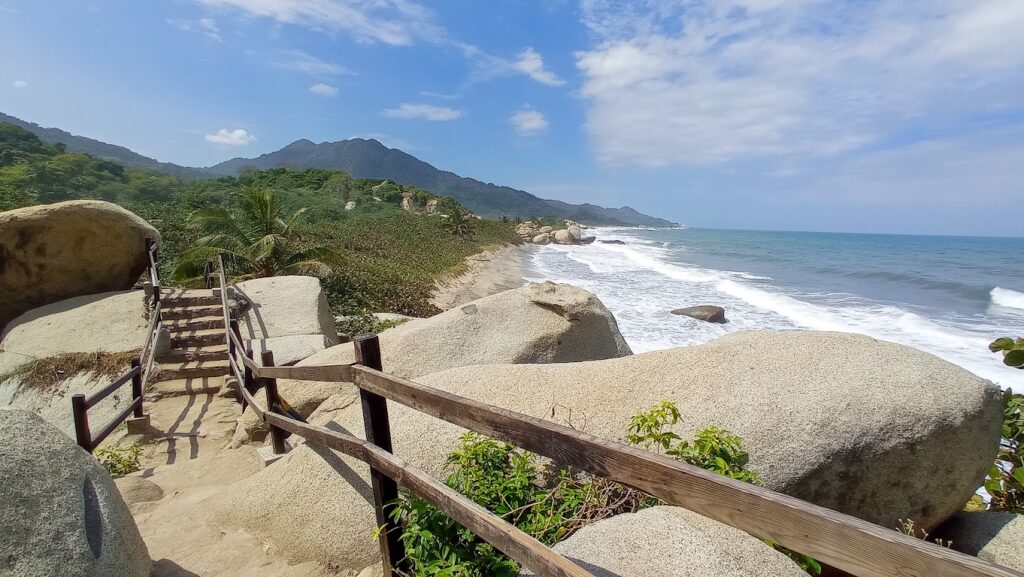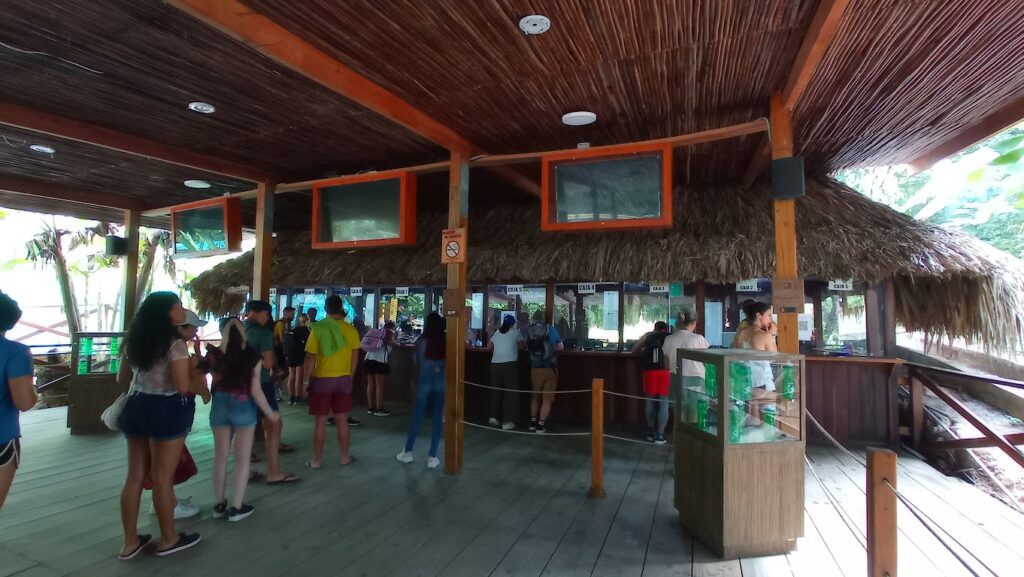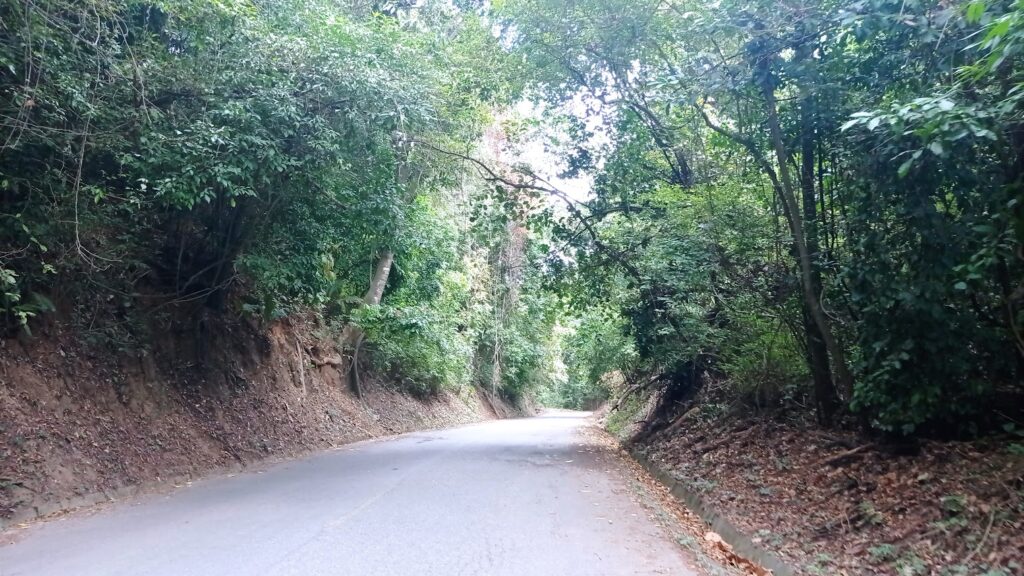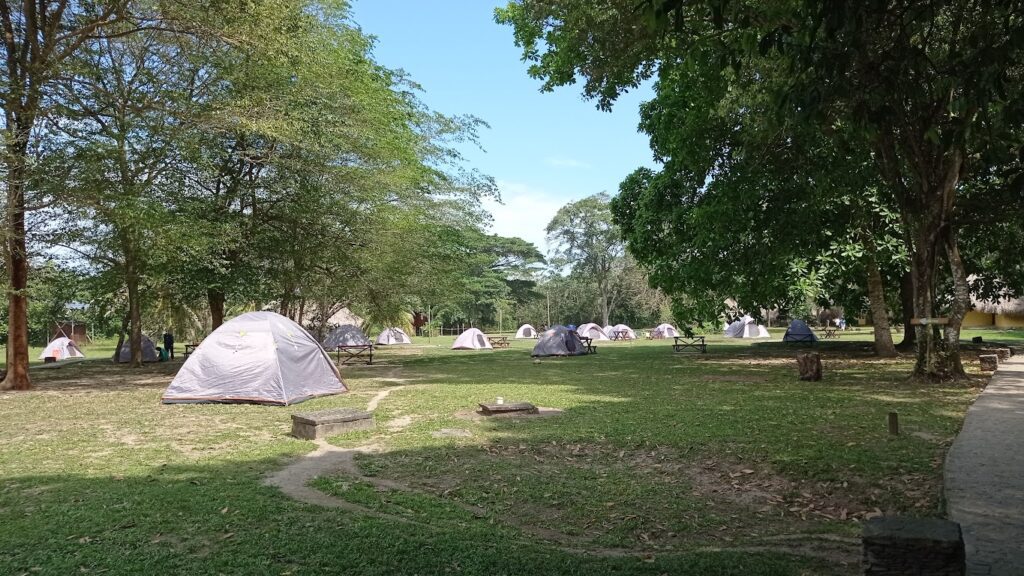How to visit Tayrona National Park and not hate it
Tayrona National Park became one of Colombia’s top tourist locations for a good reason: with its forests teeming with wildlife, its pristine beaches and the involvement of the indigenous community in the place’s management, it’s the best place to see how the Caribbean looked before all the development kicked off – though, still modernised enough that a cold beer is never far away.





However, there are some things you need to know to avoid the pitfalls – some relate to Tayrona becoming a victim of its own success, and others are just the usual diversions from the path of logic that can be all too common when travelling Latin America.
Contents
- Bring plenty of cash.
- When should you visit Tayrona?
- Tayrona is closed to visitors for set periods each year.
- Entrance to Tayrona shuts after 2 PM.
- Can you reserve entrance in advance?
- Tayrona can be done in a day trip.
- You can visit also Tayrona on a day trip from Santa Marta, but it will be rushed.
- Tayrona’s shuttles are very claustrophobic – but worth taking if you don’t fancy walking.
- Getting to Tayrona from Colombia’s cities can be a little counter-intuitive
- How to visit Tayrona on a low budget
Bring plenty of cash.

Tayrona is quite safe for visitors, so it’s better to have plenty of pesos here and not need them than to need them and not have them. Where will and won’t you need them? The entrance now accepts credit card payments for entry fees and booking accommodation, but almost everything else (shuttles, food, bookings made at the park’s accommodation itself) is cash-only.
When should you visit Tayrona?
By far the most common complaint anybody has about Tayrona is its popularity. You’ll probably have to share the trails with quite a few others at any time of year, but things are a bit busier during peak season. Between the months of March and June, and from August to November, things quieten down a lot since this is the rainy season.
Peak season in Tayrona requires a little explanation.
Peak season comes in various shades here, for lack of a better word.
The first is that which the national park itself deems peak season, which has fixed dates in which higher-than-usual entry fees will be charged. This kind of peak season isn’t just one single period: there’s December 15th – January 30th, June 15th – July 15th, Holy Week (whose dates change each year) and public holidays, along with any weekends that precede/ follow them.
The second is the “quieter” peak season, when the park is still popular with foreign tourists but Colombia’s schools are on. I happened to visit in the last week of January, technically in the middle of peak season, but the schools had recently gone back. As a result, the crowds were not too bad: there were a few times when I had to overtake, and one nightmare scenario when I couldn’t since ahead of me was a conga line. Nonetheless, there were plenty of moments when I could take in the park and its nature in complete solitude.

The third is when schools are off. During this time, the usual throngs of foreign backpackers will often be joined by hundreds of holidaying locals. You’ll have to shuffle to the side every few minutes to let someone pass on the narrow trails, and it’s almost certain that you’ll get stuck behind a conga line of slow walkers at one or more points.
A fourth, and honorary, shade of peak season is completely quiet. It won’t do you much good though, because…
Tayrona is closed to visitors for set periods each year.
The park is closed to visitors thrice each year to allow it to recover, so bear this in mind when making reservations. Closing periods run from February 1st – 15th, June 1st to 15th and October 19th to November 2nd.
Entrance to Tayrona shuts after 2 PM.
Check this when you arrive, since the official closing time can be heavily subject to change. Furthermore, the entrance will close early if it reaches the daily visitor cap, so heading in early is a good call in any case.
Can you reserve entrance in advance?
Short answer: Not really.
Long answer: Two years ago, it was mandatory to do so. Now, according to myself and many other travel bloggers, it’s only possible to enter at the gate and pay there. For research purposes, I tried looking for online tickets, and all I found was the national park’s website with outdated information since it said that only online bookings are possible, and a tickets service on Viator with a 1.5 star rating.
In short, booking tickets in advance is currently more trouble than it’s worth.
Tayrona can be done in a day trip.

This is of course subjective, but I did it as a day trip and found I had no problem fitting in all the park’s highlights:
- I started at 9 AM, a lie-in by my standards, and walked for ten minutes to the park entrance. I then spent fifteen minutes at the cafe by the entrance – the mango juice was pretty so-so, and I wouldn’t recommend it.
- The queue at the entrance took around twenty minutes, and the walk along the entrance road and trails took about two and a half hours. It was much longer since I spent so much time stopping to look at monkeys and birds, and since I walked the entrance road rather than taking one of the shuttle vans.
- I spent about two hours at the beach, swimming, drinking beer and sunbathing.
- I walked the trails back, and took the shuttle to the gate, which took around an hour and a half all in all.
You can visit also Tayrona on a day trip from Santa Marta, but it will be rushed.
There are plenty of organised tours, plus half-hourly buses from the central market will get you to the park entrance in around an hour. It’s not a bad call, considering Santa Marta has plenty of budget accommodations and a small collection of sights and activities – that said, I would recommend spending a night or two in or near the park to get the full experience. Dorms in hostels along the road won’t cost you much more than a similar bed in Santa Marta, and there are minimarkets and small restaurants to keep you well fed.
Tayrona’s shuttles are very claustrophobic – but worth taking if you don’t fancy walking.
Plying the road from the entrance to the end of the road are minibuses that almost every visitor takes, unless they’re visitors who really like walking or want to see monkeys. Exhibit A.

I did take the shuttle back though since monkey o clock had passed at this point.
What I found might just have been the most cramped bus I’ve ridden in all of Latin America. I had to have my knees at an angle, and (sat on the back row) had my shoulders squeezed against those of the person seated beside me. And neither one of us was particularly broad-shouldered.
Nonetheless, the ride only takes ten minutes once it gets going, and the windows are kept open to let in the breeze. Buses’ departure times can vary depending on drivers’ reckoning that they’ll be able to get a full bus within a timeframe they deem “soon enough”. Since there aren’t really any “good” seats, you might want to wait outside by the door.
Getting to Tayrona from Colombia’s cities can be a little counter-intuitive
Getting around Caribbean Colombia by bus requires a bit of a mini-guide since it isn’t quite as simple as travelling between centrally located terminals where every bus you could need is available.
How to get to Tayrona from Santa Marta
Santa Marta, the closest city to Tayrona, makes for a convenient springboard to the park. Santa Marta does have a bus terminal, and buses to Tayrona do leave from here, but it’s not actually the best option since it’s located on the city’s outskirts. Very unusual for a Latin American city, but fortunately there is a better option.
A bus to the park leaves every half hour between 8 AM and 6PM from the city’s market, just a few minutes’ walk east of the city centre and old town. This part of town feels a little more spit-and-sawdust than the centre, but it is safe enough to walk through. Just keep your phone in your pocket as much as possible, and face a wall when checking directions – snatchings have happened here, like everywhere in Colombia.
The corner between Calle 11 and Carrera 9 is where you want to go. Here, you should see one or two coaches parked, and there will probably be a guy on the kerb yelling “Tayrona, Tayrona, Tayrona!”
Conveniently, just a little further down this block is where minivans to Minca arrive and depart.
Whether you go from the terminal or the market, a bus ticket shouldn’t cost more than $15,000 COP.
Insider’s tip: On Colombian buses, you can get off literally anywhere that isn’t a major highway – the driver or conductor will probably let you know when they’ve reached the entrance to Tayrona itself, but if you’ve booked accommodation along the road, you can ask to get off sooner. Say “aqui por favor” (a-key pour favour) to the conductor to get let off, and “tengo bagajes” (ten-go ba-ga-hays) to let them know that you’ve got luggage stored in the hold.
How to get to Tayrona from Minca
Doing this is very straightforward.
Step one: get a minivan to Santa Marta. The trip takes around 40 minutes, with the company’s office near the bridge over the stream. There will probably be some vans parked outside it already. Trips cost $9,000 COP.
Step two: get off at the market, the van’s final stop. The spot from which buses to Tayrona leave is just fifty metres up the road.
How to get to Tayrona from Cartagena
Getting between the two by public transport will require a transit and a change of bus in Santa Marta. Thanks to the frequency of both buses though, doing it all within a day without getting worn out at the end is perfectly doable.
Berlinastur is the best option for getting to Santa Marta, since their minibuses leave every fifteen minutes from their centrally-located office in Cartagena. The bus will stop for about half an hour in Barranquilla, where there are toilets and a shop where you can grab some drinks and pastries. All in all, the trip to Santa Marta should take around five hours.
Once in Santa Marta, the market is where you want to be heading. Berlinastur’s Santa Marta offices are unfortunately on the city’s outskirts, but there are city buses between here and the market. Just make sure you have enough cash in small notes, and you’re good to go.
Warning: In Santa Marta, the bus won’t pull into a bay within a terminal like it will in Cartagena, but will instead park streetside. The van will then start heading back the way – I almost ended up going back to Cartagena, but fortunately realised what was happening before it was too late.
When you get to the market, head to the corner of Carrera 9 and Calle 11. You might see a small office for a transport company, but don’t go into it – this company only does minivans to Minca. Instead, for Tayrona, head straight for the parked coaches. There may even be someone outside shouting “Tayrona, Tayrona!” Get on board, and you’ll pay the conductor when the bus is on the road.
How to visit Tayrona on a low budget
Despite hearing from a lot of people that Tayrona is expensive, I didn’t find it to be overly so. To be sure, it was much more expensive than Andean Colombia (around Medellin and Bogota), but compared to Caribbean Colombia… not so much.
Except for one thing… the entrance fee.
For foreigners, this is $62,000 and goes up to $73,000 COP in the peak season. Unfortunately, there isn’t much that can be done about it, save for visiting at a quieter time of the year. On top of this, you’ll need to buy mandatory medical and evacuation insurance at the gate for $4,000 COP for day trippers, and $7,000 for overnight trips. Your own travel insurance, even if it covers the exact same things, will not exempt you from this requirement.

Accommodation in the park is in short supply and the demand is high, though prices for a tent or hammock still make an overnight stay affordable. Both start at $40,000, with certain exceptions – for example, you can get half off the tent price if bringing your own, and there is one particular hammock spot with better seafront views that will cost $10,000 more.
There aren’t any dorms onsite, so if you want a roof over your head in the park itself you’ll need to fork out $200,000 COP for a hut.
A decent halfway house can be staying outside the park, since there’s a handful of budget accommodations that offer every creature comfort lining the road up to the entrance.
I got lucky and found one place, Hostel Diosa Jaguar, that was offering private rooms with ensuites for £10/ $55,000 COP a night – though, they are a new property, so I can’t guarantee their prices will stay this way forever. Another solid option is Eco Hostel Yuluka, where the dorms’ air conditioning and the pool might just have you loving your stay there more than visiting the park itself!


Of course, staying outside the park means you’ll need to pay the entrance fee each time you enter, so plan out how many days you’d like to spend in the area. As said earlier, I found a day in the park to be enough time.
Food in Tayrona is a little more expensive than outside the park, but doesn’t feel like too much of a rip-off when one considers the additional challenges associated with getting scran this far out and keeping it fresh. Given that cold beers and fresh sea bass on one of Tayrona’s beautiful beaches will cost 10-20% more than in the cities of Caribbean Colombia, it won’t feel like money badly spent.




